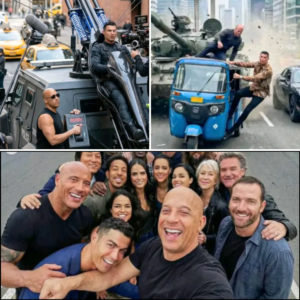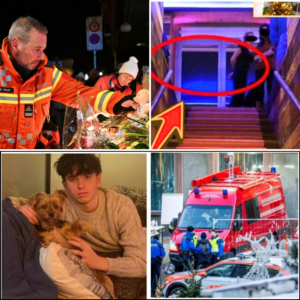The same month the CEO set a date to unveil autonomous cars, the system his company markets as ‘Full Self-Driving’ was involved in a fatal crash.

Elon Musk.
Photographer: Sergei Gapon/AFP/Getty Images
This was supposed to be the day Tesla would show off some robotaxis — a date Elon Musk set way back in April.
The Tesla CEO recently confirmed he’d postponed the presentation to Oct. 10, saying he wanted to make some important changes to the vehicles before unveiling them. My colleagues Dana Hull and Ed Ludlow first reported last month that Musk had ordered up design alterations, and that the team working on the project needed more time to build additional prototypes.
The delay was a big letdown because the event had served as a shiny object to distract from Tesla’s declining sales. The diversionary tactic was wildly successful — over an 11-week stretch beginning in April, Tesla added $386 billion of market capitalization.
Over the past month, Tesla has coughed up much of those gains. The slight delay in timing of the robotaxi unveiling didn’t help, but the more important issue is the substance of the eventual event. Recent developments suggest it will be nothing more than a promotional spectacle, and that Tesla is endangering motorists by letting customers test out its technology with laxer safety controls.
Tesla’s Fleeting Robotaxi Run-Up
Its valuation soared by $386 billion in just 11 weeks
Source: Bloomberg
One indicator of how close Tesla is to putting robotaxis on the road is Full Self-Driving, the company’s misleadingly named driver-assistance system that doesn’t actually make its vehicles autonomous.
The system known as FSD gets endlessly hyped by Musk and his fans on X, but it doesn’t exactly have a sterling reputation on Wall Street. Alexander Potter, a bullish equity analyst at Piper Sandler, alluded to this in a July 28 report titled: “Tesla May Have Solved the Self-Driving Puzzle. Don’t Roll Your Eyes.”
“We think investors have grown accustomed to ignoring Tesla’s hyperbole. And we get it,” Potter wrote. “After all, Elon Musk has been over-promising since 2017. There have been 90+ updates to the FSD system in the last four years, and fully autonomous Teslas still don’t exist. Why should the latest FSD update be any different?”
Well, Potter wrote, Tesla’s latest version of FSD appeared to be “revolutionary” based on user reviews he’d seen on X. In a follow-up report issued three days later, Potter said that several of his clients doubted whether social media posts were reliable, so he pointed them to a crowd-sourced dataset called the FSD Community Tracker.
Tesla owners have submitted data on more than 167,000 miles worth of driving to this tracker, which sounds like a lot. On Wednesday, however, one of Musk’s deputies posted on X that more than 1.6 billion miles had been driven with FSD. So, before even getting to questions as to whether the tracker’s data is reliably gathered and reported, the amount of data that’s been crowdsourced is a tiny fraction of the total driving that’s been done on FSD.

The interior of a Tesla Model S.Photographer: Bloomberg/Bloomberg
In the absence of Tesla publicly reporting detailed data along the lines of what the FSD Community Tracker attempts to gather and present, other Wall Street analysts have taken a different approach to gauging the company’s progress toward self-driving.
William Stein of Truist Securities took FSD for test drives in April and July. The analyst, who has a hold rating on Tesla’s stock, summed up his first experience as “good, but not useful today,” then deemed his second go-round as “no better, arguably worse.” In fact, the Model Y he borrowed from a Tesla showroom in suburban New York City almost rear-ended another car at a busy intersection.
That wasn’t the only aspect of Stein’s July 29 report that was troubling. He wrote that, during his test drive last month, a safety feature seemed to have been removed — he was no longer required to tug on the steering wheel, even once, to keep FSD engaged.
While Tesla warns customers that FSD is intended for use by fully attentive drivers who keep their hands on the wheel, actually enforcing this hasn’t been the company’s strong suit. The US National Highway Traffic Safety Administration deemed its driver-monitoring system “weak” when it launched an investigation back in May into whether Tesla’s remedy for 2 million vehicles recalled late last year did enough to keep customers from misusing its driver-assistance features.
While the Model Y that Stein drove didn’t seem to be keeping tabs on if he was touching the steering wheel, Tesla also employs an in-car camera to track whether drivers are paying attention. The trouble is, Stein said Tesla’s monitoring system was also lenient in this regard. He wrote that he turned his head completely away from the road, and the car continued for around 20 to 40 seconds before warning him to pay attention.
“I mean, my head was completely turned away, I was looking in the back seat,” Stein said last week on Bloomberg Television. “Luckily, I was able to do this because I brought my son with me, and I said ‘Hey, tell me if there’s anything dangerous about to happen.’”

WATCH: Bloomberg’s Ed Ludlow speak with Truist Securities analyst William Stein about testing out Tesla’s Full Self-Driving system.
When Stein returned the Model Y to Tesla’s showroom, an associate told him that he had just experienced “demo mode,” which allows drivers unfamiliar with FSD the opportunity to test out the system without as many warnings that they need to pay attention.
“For me, it was a little frightening that it allowed me to be that distracted,” Stein said. “You could do a lot of damage in that space.”
Hours after Stein’s appearance on Bloomberg TV, the Associated Press reported that authorities in Washington state had determined a Tesla that hit and killed a motorcyclist near Seattle in April was operating on FSD at the time of the crash.
The April 19 incident involved a 56-year-old driver of a Model S that struck a motorcycle on State Route 522, northeast of Seattle. The 28-year-old motorcyclist was pronounced dead on the scene. The Tesla driver was arrested on suspicion of vehicular homicide and told authorities he’d been inattentive and looking at his phone.
So, to recap — the very same month that Musk set a date for a robotaxi event that is no longer happening on schedule, a Tesla driver put too much faith into a system that Tesla’s CEO promotes as cause for self-driving optimism. That motorist now faces potential legal jeopardy, and another is dead.
On this robotaxi day that wasn’t, investors ought to ask themselves whether they, too, are placing too much faith in technology that isn’t ready and is being deployed recklessly.
News Briefs
Plug-ins exceed 50% of China’s auto sales for the first time.
Car-renter Sixt shrinks its EV fleet, citing demand letdown.
Rivian sees higher production next year after flat 2024.
Before You Go

Crews work to build new lanes on Interstate 95 in Fredericksburg, Virginia.Photographer: Drew Angerer/Getty Images North America
Several US states are tapping a federal carbon-reduction program to fund highway projects, arguing that adding vehicle lanes can bring emissions down. Critics counter thatdirecting funds to interstate upgrades runs counter to the intent of the Biden administration’s $1.2 trillion bipartisan infrastructure law. Highway expansions have emerged as a focus for climate activism in recent years, with environmental groups squaring off against transportation agencies in Oregon, Texas and other states over roadbuilding policies.





